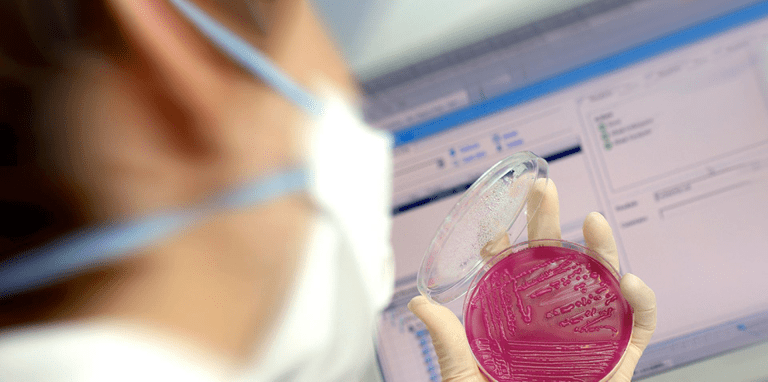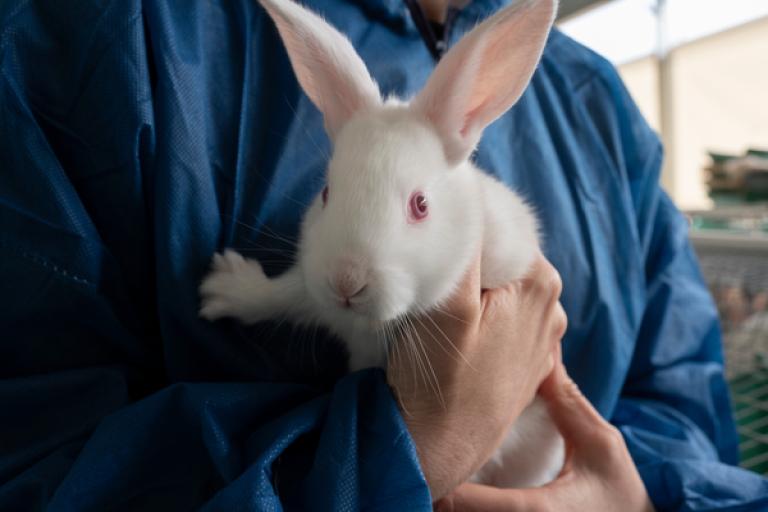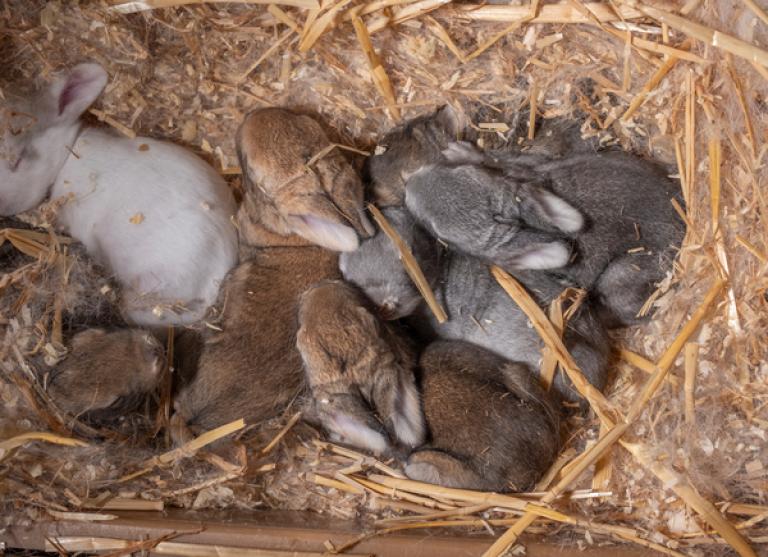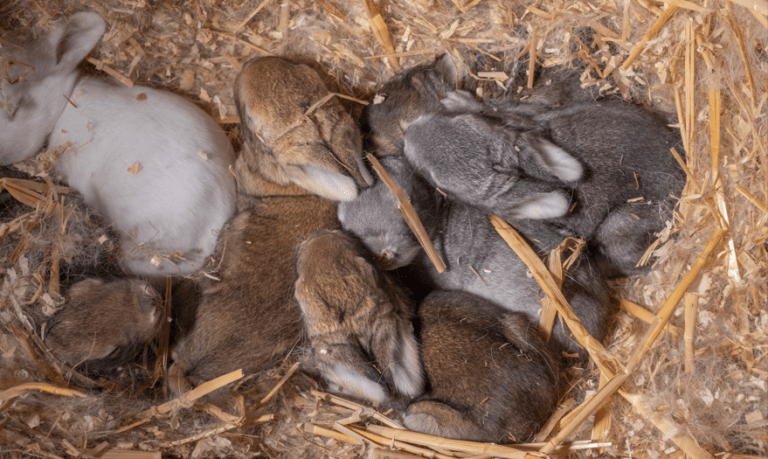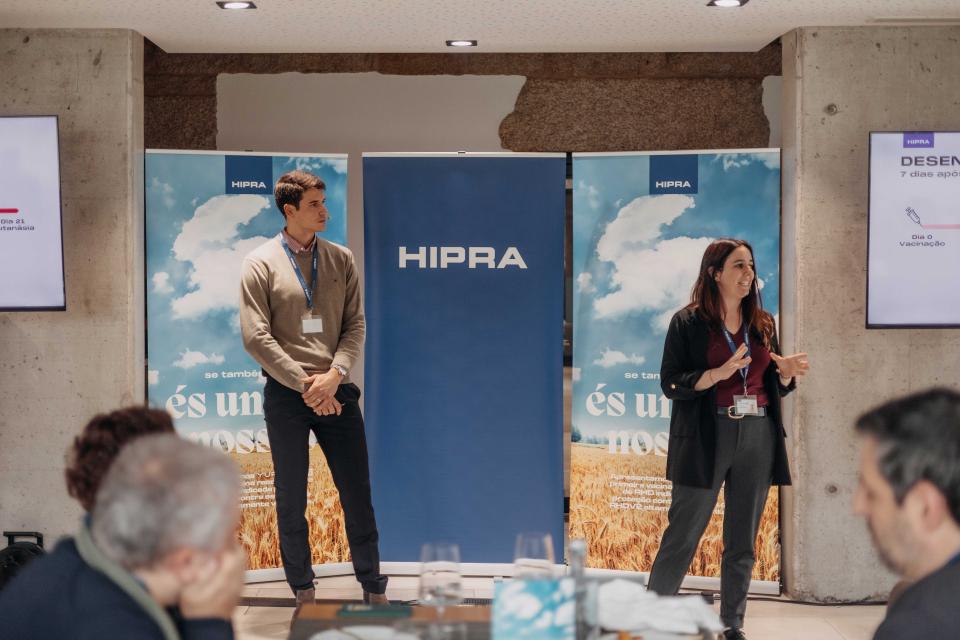AETIOLOGY:
It is caused by a Calicivirus (genus Lagovirus, family Caliciviridae), a non-enveloped RNA virus with only one major capsid protein (VP60). It is characterized by high morbidity and great resistance in the environment.
In 2010, an additional RHDV, phylogenetically and antigenically distinct from RHDV, emerged in Europe and was named RHDV2. Two different serotypes have therefore been reported: RHDV1 or “classical RHDV” and RHDV2 or “variant strain”.
TRANSMISSION:
- Direct contact: infected rabbits can shed it in their secretions and excretions (oral, nasal, conjunctival and parenteral).
- Indirect contact: fomites such as clothing, cages, equipment, etc., contaminated food and vectors (scavenging mammals, birds and insects).
CLINICAL SIGNS:
Depending on the clinical evolution of the disease, three different clinical courses can occur. In the hyperacute form, sudden death without clinical signs is highly typical. Mortality varies depending on the RHD strain and the age of the rabbit:
- RHDV1 or classical strain: high mortality (80-90%) in adult rabbits.
- RHDV2 or variant strain: highly variable mortality (50-80%). Death may occur in rabbits from 7-15 days of age onwards.
In the acute and subacute forms, rabbits usually have fever, anorexia, apathy, neurological symptoms, sometimes respiratory signs, jaundice, bloody nasal discharge, epistaxis, etc.
LESIONS:
Liver necrosis, splenomegaly, congestion and haemorrhages in multiple organs: spleen, thymus and lungs.
DIAGNOSIS:
- Identification of the causative agent: liver is the organ of choice for RHD identification, as it contains the highest viral titre. Haemagglutination test, electron microscopy, sandwich ELISA, RT-PCR and Western blotting can be used to detect the virus.
- Detection of immune response (serology): haemagglutination inhibition test and ELISA.
TREATMENT, PREVENTION AND CONTROL:
There is no specific treatment for RHD, therefore supportive care should be implemented.
The main tools for prevention of the disease are the application of biosecurity measures (cleaning and disinfection, isolation, etc.) and early vaccination of all rabbits. There are some vaccines available, which can be administered from 30 days of age.
In some cases, vaccination can be used as an emergency strategy when RHD occurs in a group of rabbits.





